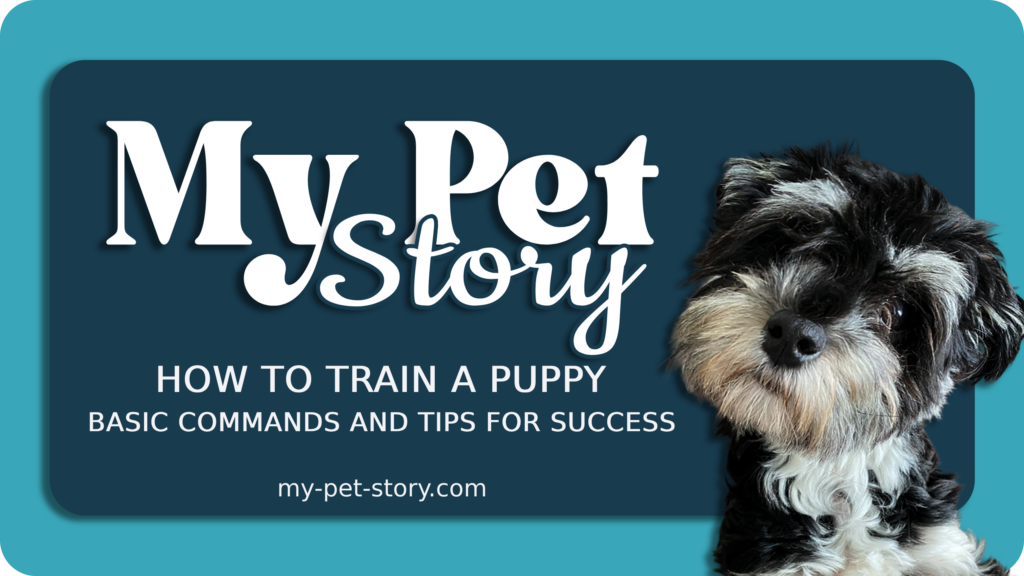How to Train a Puppy
How to Train a Puppy Basic Commands and Tips for Success Raising a puppy is a joyful yet challenging journey that requires patience, consistency, and a deep understanding of canine behavior. This guide distills proven strategies to help you nurture a confident, obedient, and emotionally balanced dog. Below is a step-by-step roadmap to success, with key takeaways highlighted for quick reference. 1. Start Early: The Critical Socialization Window 🔑 Crucial Insight: Puppies have a prime socialization window between 3–16 weeks of age. Exposure to new experiences during this period shapes their lifelong temperament. What to Do: ✔ Introduce Novel Stimuli: Safely expose your pup to diverse people, dogs, sounds (e.g., vacuums, traffic), surfaces (grass, tile), and environments. ✔ Positive Reinforcement: Pair new experiences with treats, praise, or play to build positive associations. ✔ Avoid Overwhelm: Keep sessions short (5–10 minutes) and end on a positive note. ⚠️ Warning: Missing this window can lead to fear, aggression, or anxiety in adulthood. 2. Master the Basics: Essential Commands 🔑 Crucial Insight: Training builds trust, mental stimulation, and a common language between you and your pup. Priority Commands: ✔ Sit – Foundation for impulse control. ✔ Stay – Teaches patience and focus. ✔ Come (Recall) – Lifesaving in emergencies. ✔ Leave It – Prevents scavenging or grabbing dangerous items. ✔ Heel – Ensures calm leash walking. Training Tips: ✔ Use high-value treats (e.g., boiled chicken, cheese). ✔ Keep sessions 5–10 minutes long to match a puppy’s attention span. ✔ End on a Win: Always finish with a successful repetition. 3. House Training: Consistency is King 🔑 Crucial Insight: Puppies thrive on routine. The faster you establish one, the quicker they’ll learn Steps to Success: ✔ Schedule Potty Breaks: Take your pup out: Immediately after waking up. 10–15 minutes after meals. Every 1–2 hours (adjust by age: 1 hour per month of age). ✔ Use a Cue: Say “Go potty” when they eliminate, then reward lavishly.✔ Limit Freedom: Confine them to a small area (e.g., playpen) when unsupervised to prevent accidents.⚠️ Avoid Punishment: Never rub their nose in accidents—this creates fear, not understanding. 4. Bite Inhibition: Teaching Gentle Play 🔑 Crucial Insight: Puppies explore the world with their mouths but must learn to control bite pressure. How to Respond: ✔ Yelp “Ouch!” (mimic a puppy’s cry) and stop play immediately to teach that biting ends fun. ✔ Redirect to a chew toy and praise gentle play. ✔ Socialize with Other Puppies: They learn bite control naturally through play. 5. Crate Training: Creating a Safe Den 🔑 Crucial Insight: A crate becomes a puppy’s sanctuary if introduced positively. Steps to Crate Acceptance: ✔ Feed Meals Inside: Toss treats into the crate to build positive associations. ✔ Gradual Alone Time: Start with 5 minutes and slowly increase duration. ✔ Never Use as Punishment: The crate should feel safe, not scary. 💡 Pro Tip: Cover the crate with a blanket to create a den-like environment. 6. Socialization Beyond Dogs: Prevent Fear & Aggression 🔑 Crucial Insight: Socialization isn’t just about dogs—it’s about preparing your pup for the human world. Expose Them To: ✔ Men, women, children, people wearing hats/uniforms. ✔ Bikes, skateboards, cars. ✔ Grooming tools (brushes, nail clippers). ✔ Veterinary exams (practice handling paws, ears, and mouth). 7. Exercise & Mental Stimulation: Avoid Boredom 🔑 Crucial Insight: A tired puppy is a well-behaved puppy. Daily Essentials: ✔ Physical Exercise: Age-appropriate play (e.g., fetch, short walks). ✔ Mental Challenges: Puzzle toys, sniffing games, or hiding treats. ✔ Enforced Naps: Puppies need 18–20 hours of sleep daily! Overstimulation leads to hyperactivity. 8. Nutrition & Health: Fuel for Learning 🔑 Crucial Insight: A balanced diet supports brain development and energy levels. ✔ Choose high-quality puppy food (look for AAFCO certification). ✔ Avoid overfeeding—obesity harms joints and longevity. ✔ Consult Your Vet: Discuss vaccination schedules and parasite prevention. 9. Common Mistakes to Avoid ❌ Inconsistency: Mixed signals confuse puppies (e.g., allowing jumping “sometimes”). ❌ Skipping Socialization: Leads to fear-based behaviors. ❌ Overusing “No”: Focus on rewarding desired behaviors instead of punishing unwanted ones. 10. Advanced Training: Building a Lifelong Bond Once basics are mastered, explore: ✔ Trick Training (spin, shake, roll over). ✔ Canine Sports (agility, nose work). ✔ Therapy Dog Work: Builds confidence and purpose. Final Tips for Success ✔ Stay Calm: Dogs mirror your energy—frustration undermines progress. ✔ Celebrate Small Wins: Training is a marathon, not a sprint. ✔ Seek Expert Guidance if Needed: Certified trainers (CPDT-KA) can address complex issues like resource guarding or anxiety.
![]()
How to Train a Puppy Read More »

